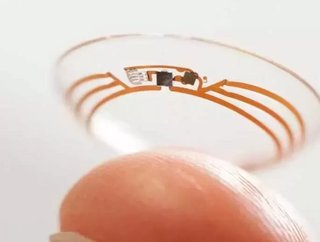Novartis, Google move forward with smart contact lens developments

Novartis and Google have been working on smart contact lenses for a while now, and most recently, Novartis announced that the company was planning on beginning the first of human tests next year.
According to a report, Novartis CEO Joe Jimenez told Swiss newspaper Le Temps “it would take about five years to see a product on the market.” The project, however, was “progressing well.”
Click here to read the latest edition of Healthcare Global magazine!
The Novartis smart lens is for accommodative vision correction in people with presbyopia, or age-related long sightedness, who can no longer read without glasses.
“For people living with presbyopia who can no longer read without glasses, the ‘smart lens’ has the potential to provide accommodative vision correction to help restore the eye’s natural autofocus on near objects in the form of an accommodative contact lens or intraocular lens as part of the refractive cataract treatment,” Novartis said in a statement last year.
RELATED TOPIC: [VIDEO] Novartis studies muscle atrophy by sending mice into space
Under an agreement signed with Google in 2014, Novartis is also developing smart contact lenses to help diabetics track their blood glucose levels.
The contact lens is one of the biggest projects under Google’s Life Sciences group, which recently graduated Google X to become an independent subsidiary of Alphabet. Its new name under Alphabet has not been announced, but the company has taken a number of steps recently to put diabetes in the forefront of its work, including partnerships with Dexcom and Sanofi.
A recent patent application shed light on how the smart lens will be powered by Google—an external device will power the sensor and it could be handheld or embedded in a companion wearable.
RELATED TOPIC: Novartis, malaria experts to discuss innovative solutions to eliminate disease
“An external reader device or ‘reader’ can radiate radio frequency radiation to power the sensor,” the patent application says. “The reader may thereby control the operation of the sensing platform by controlling the supply of power to the sensing platform. In some examples, the reader can operate to intermittently interrogate the sensing platform to provide a reading by radiating sufficient radiation to power the sensing platform to obtain a measurement and communicate the result. The reader can also store the sensor results communicated by the sensing platform. In this way, the reader can acquire a series of analyte concentration measurements over time without continuously powering the sensing platform.”
The reader could also be built into clothing and jewelry.
"It's really hard for people to manage their blood sugar," said Jacquelyn Miller, a Google Life Sciences spokeswoman, in an interview with KQED. "We're hoping to take some of the guesswork out of it."
[SOURCE: Reuters, MobiHealth News]








